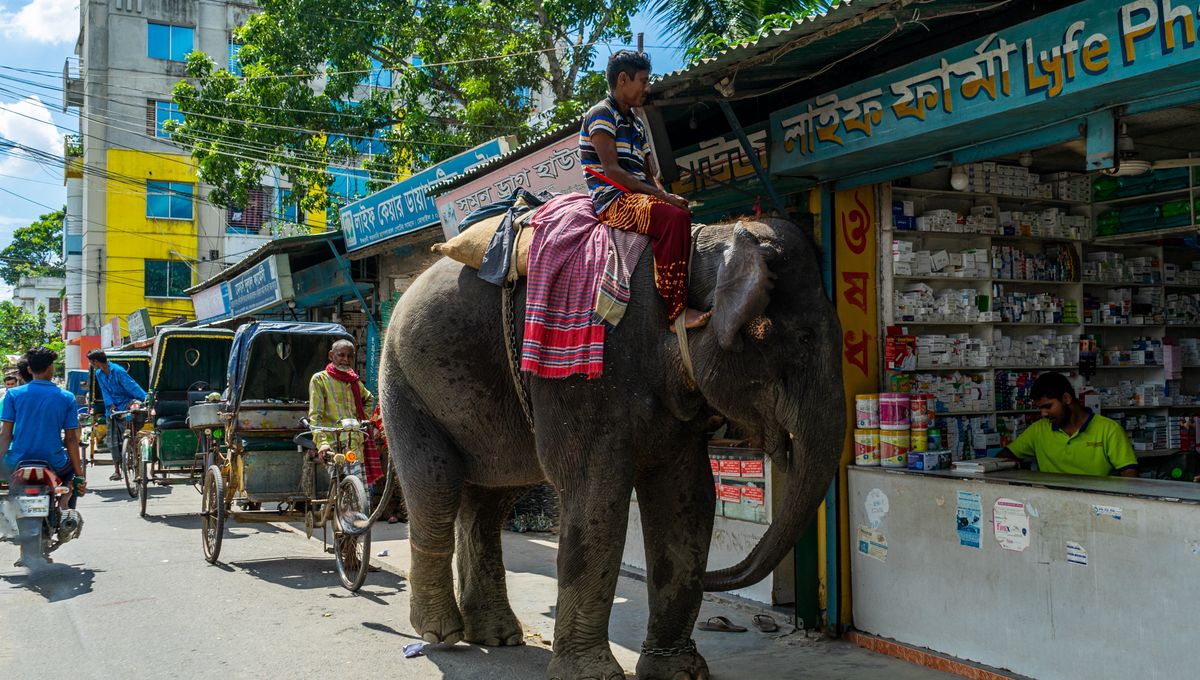
After years of exploitation and struggle, Bangladesh is giving its elephants a second chance. A new government project aims to free the country’s captive giants, once forced into circuses, tourist rides, or back-breaking labor, and return them to the wild.
Asian elephants (Elephas maximus) once roamed widely across southern Asia, through the forests of the Indian subcontinent and Southeast Asia to parts of China and possibly western Asia. Today, their range has dwindled dramatically, limited to fragmented populations in just over a dozen countries, including India, Sri Lanka, Nepal, Thailand, Myanmar, Malaysia (Borneo), and Indonesia (Sumatra).
Bangladesh also has a small but significant population, consisting of approximately 268 wild elephants, as well as 93 migratory elephants, according to a 2016 report. On top of its wild-roamers, the country holds at least 96 captive elephants in zoos and circuses, while countless undocumented elephants are forced into back-breaking labor, such as giving tourist rides or carrying heavy loads.
To remedy their shrinking fortunes, Bangladesh’s Ministry of Environment, Forest, and Climate Change has reportedly launched the “Elephant Conservation Project”, a multi-pronged initiative aimed at protecting wild populations and rehabilitating those held in captivity.
In 2024, Bangladesh’s High Court gave extra protections for Asian elephants, including a ban on the adoption of wild elephants.
The project is now boosting those efforts through an updated survey of the elephant population, habitat restoration, and plans to reduce human-elephant conflict using technology and rapid response teams. Local communities will also be involved through training programs, volunteer squads, and awareness campaigns aimed at involving younger generations in conservation.
Ultimately, the goal is to set up sanctuaries within protected areas of their natural habitat, providing safe spaces to rehabilitate captive elephants.
“Initially, we selected two forests – Rema-Kalenga in Moulvibazar and Chunati in Chittagong. A team of experts is working on finalizing the best option between these two to turn into their home,” project director A.S.M. Jahir Uddin Akon recently told Mongabay.
The team is looking towards elephant rehabilitation programs in other countries, including Sri Lanka and Thailand, which have successfully reintegrated captive elephants into the wild. Experts believe there will undoubtedly be challenges ahead, but the new project hopes to rejuvenate Bangladesh’s elephant population and restore a struggling part of the country’s natural heritage.
“Though the initiative is good, it will be tough to implement for several reasons. Firstly, the captive elephants have already lost their wild nature to some extent, and secondly, they might carry different types of diseases due to their close contact with humans, which needs to be handled carefully,” said Mohammed Mostafa Feeroz, a zoology professor at Jahangirnagar University in Bangladesh, also speaking to Mongabay.
Source Link: From Chains To Forests: Working Elephants Set To Be Rehabilitated In The Wild Under New Project